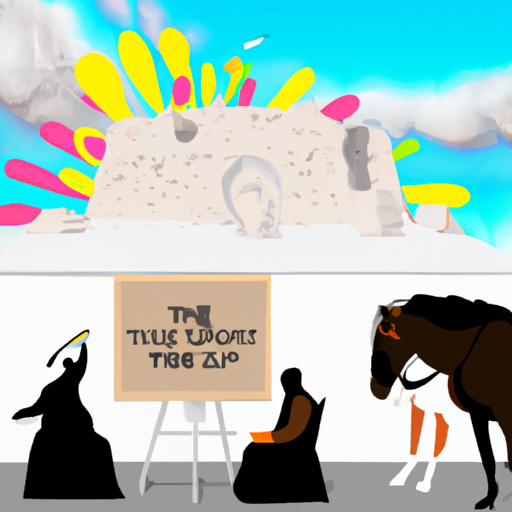History of Ancient China: Exploring the Rich Culture and Traditions
Introduction
Mystery shrouds the ancient land of China, with its secrets stretching back to a time long forgotten. From the depths of antiquity arise tales of inventions and innovations that have shaped the world we know today: papermaking, gunpowder, compasses and printing. Its influence can be felt in philosophy, art, literature, architecture, religion and science. The grandeur of its past still stands tall in the form of cities and monuments that have endured for centuries. Moreover, its legacy is seen in the intricate system of government it developed: a complex bureaucracy and social structure.
– Ancient Chinese History and Dynasties
A long and complex journey of over four millennia, Chinese history has been shaped by the many dynasties that have ruled it. The Xia Dynasty began this legacy in 2100 B.C., followed by the Shang Dynasty from 1600 B.C. to 1046 B.C., which is remembered for its bronze-making technology, written system and chariot warfare. The Zhou Dynasty then reigned from 256 B.C., during which Confucianism was born and Buddhism began spreading across China.
The Qin Dynasty then united all of China under one ruler for the first time in 221 B.C., resulting in a network of roads connecting different parts of the country, as well as a unified currency, weights and measures system and writing language throughout the regions of China. This was succeeded by the Han Dynasty from 206 B.C.-220 A.D., when Confucianism became the official ideology of Chinese statehood and trade with foreign powers such as Rome, India and Persia flourished due to increased diplomatic contact with them.
The Sui Dynasty held sway from 581 A D -618 A D , before being replaced by the Tang Dynasty from 618 A D -907 A D . During this period, China experienced its golden age with advances made in literature, art, science and technology as well as a prosperous economy based on international trade via Silk Road routes connecting East Asia with Europe and Africa..
The Song Dynasty then took control from 960 A D -1279 A D , followed by Mongol rule under the Yuan Dynasty from 1271-1368 A D , when northern China was dominated while southern Chinese maintained their own semi-independent rulership known as “Southern Song” or “Nan Song”.. Beijing became established as the capital city during Ming rule between 1368-1644 A D , while porcelain production reached its peak level of sophistication.. Finally, Manchu rule under the Qing Dynasty from 1644-1912 saw Western influence begin to enter into Chinese society through increased contact with Europeans
– Contributions of Ancient China to the World’s History
Mystifyingly, for millennia, the Chinese civilization has been one of the oldest in the world, and its legacy continues to be felt across the globe. A plethora of inventions and discoveries have emerged from this ancient culture that have left an indelible mark on humanity.
Cai Lun’s invention of paper in 105 AD is a prime example of China’s influence on our modern world. This revolutionary development enabled easier storage and transmission of knowledge, leading to higher literacy rates and facilitating the spread of written language and culture at an unprecedented rate.
Gunpowder was also developed in China as early as 9th century AD, revolutionizing warfare all over Asia, Europe, and Africa with its destructive power. The magnetic compass invented during the Han Dynasty (206 BC – 220 AD) allowed sailors to accurately determine their location at sea without relying solely on celestial navigation or landmarks on land, making long-distance travel much safer and more efficient for explorers around the globe.
In addition to these groundbreaking innovations, Ancient Chinese medicine has had a lasting impact on healthcare today. Traditional Chinese medicine encompasses practices such as acupuncture, herbal remedies, massage therapy, dietary therapy, exercise therapies like qigong and tai chi, as well as breathing exercises like yoga or meditation – all of which are still widely used due to their effectiveness in treating various ailments without side effects or invasive procedures.
The contributions made by Ancient China are immeasurable; they have truly shaped our modern world in countless ways.
– Historical Inventions from Ancient China
Mystifyingly, the past of China is brimming with a plethora of inventions that have had an immense effect on our lives today. The compass, for example, is thought to be one of the most significant creations from antiquity; it was initially used for divination and fortune-telling during the Han Dynasty around 206 BCE – 220 CE. This early form of a magnetic compass was composed of lodestone or magnetite which naturally oriented itself towards the north-south axis when placed on a flat surface, thus allowing navigators to determine their direction and find their way home.
Another remarkable Chinese invention is papermaking, which was developed by Cai Lun in 105 CE during the Eastern Han Dynasty. Before its invention, people wrote on bamboo slips, wooden tablets, animal hides and even silk cloths; however paper revolutionized how information was stored and transmitted as it was easier to produce and cheaper than other materials.
The Great Wall of China is another impressive feat of engineering that still stands today as a signifier of Chinese ingenuity. Construction began in 7th century BCE under Emperor Qin Shi Huang with later additions being made by later dynasties such as the Ming Dynasty in 1368 CE. The wall served as a defensive structure against invaders from the north while also providing protection for those living within its boundaries.
Indeed, ancient China has left an indelible mark on history with its many inventions over thousands of years ago that remain relevant today.
– Historical Art and Culture of Ancient China
The culture of antiquity in China is a source of great fascination and wonder, with its art and traditions having been passed down through the ages. From the Neolithic period to the Han Dynasty, Chinese art has been a cornerstone of the nation’s heritage. Ancient Chinese art is renowned for its singular style and techniques which have had an immense impact on other cultures worldwide. Pottery vessels from as far back as 10,000 BC were decorated with simple geometric patterns, which eventually grew into more intricate designs such as dragons and phoenixes, symbols of power and authority. Sculptures usually portrayed gods or goddesses or mythical creatures while paintings depicted landscapes or scenes from everyday life. Calligraphy also developed as an art form over time, becoming especially influential in East Asia.
Religious beliefs like Confucianism, Taoism, and Buddhism shaped ancient Chinese culture significantly. Confucianism taught respect for authority figures while Taoism encouraged living in harmony with nature; Buddhism brought new concepts about morality and spirituality to China during the Han Dynasty (206 BC-220 AD). Traditional festivals such as Spring Festival (Chinese New Year) are still celebrated today. Other important aspects of ancient Chinese culture include martial arts like kung fu; tea ceremonies; traditional music; literature; opera; painting; calligraphy; acupuncture; feng shui (geomancy); mahjong (a type of tile game); and cuisine.
The beauty and complexity of ancient China continues to captivate us today, providing a glimpse into this remarkable civilization that has endured for thousands of years.
– Historical Events that Shaped Ancient Chinese History
Tang culture.
Amidst the chaos and turmoil of ages past, a plethora of remarkable events have shaped the course of Chinese history. From the unification of China under Qin Shi Huang to the flourishing Tang Dynasty, these moments in time have left an indelible mark on the nation’s culture and identity. With advances in science, technology, and philosophy, as well as the establishment of diplomatic relations with other countries and the Silk Road trade route connecting Europe to Asia, ancient China was a period of great progress and prosperity. The Three Kingdoms period also produced some of China’s greatest literary works which continue to be studied and celebrated today. All these events demonstrate how powerful and enduring Chinese civilization has been throughout its long history.
conclusion

Mystique and grandeur have long surrounded the past of China, a nation with a documented timeline that stretches back to over four thousand years. From its formative days to the current age, Chinese culture has left an indelible mark on the world. The country’s development in technology and science is renowned, having birthed papermaking, gunpowder, printing, and the compass. For generations, Chinese philosophy and literature have been scrutinized and praised across the globe.
.
Some questions with answers
Q1. What is ancient China known for in history?
A1. Ancient China is known for its long and complex history, which includes the invention of paper, gunpowder, printing, and the compass.
Q2. What other inventions did ancient China make?
A2. Ancient China also made important contributions to mathematics, philosophy, astronomy, engineering, medicine, and agriculture.
Q3. What type of government did ancient China have?
A3. Ancient China had a feudal system of government with an emperor at the top and regional rulers below him who were in charge of their own provinces.
Q4. How did ancient Chinese culture influence other civilizations?
A4. Ancient Chinese culture had a significant influence on other civilizations around the world through trade and cultural exchange.
Q5. What was the most famous Chinese dynasty?
A5. The most famous Chinese dynasty was the Han Dynasty (206 BC–220 AD), which was one of the longest-lasting dynasties in Chinese history.






